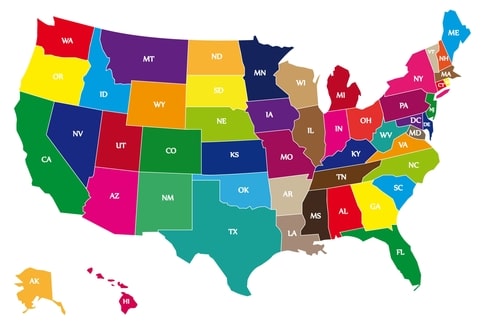 Wake Up! Obesity in Children Now at Alarming Levels
Wake Up! Obesity in Children Now at Alarming Levels
The problem of childhood obesity in the United States has been well documented, with a notable increase in recent years. Whereas in 1980 only 7% were obese in 1980, it is now estimated that the figure has now risen to over 20%. This article outlines the overall distribution of childhood obesity and underlines the need for urgent action.
Childhood Obesity is on the Rise
The Centers for Disease Control outlines statistics for obesity in both the adult and child population. It shows a certain amount of variation between slightly above the 1980 average and the current average, with states such as Colorado and Utah recording the lowest rates (less than 10%) of the child population as obese. Despite their lower than average obesity rates, rural states such as Wyoming, Utah, and Alaska are close to the 1980 level for childhood obesity. Since it now ranks fourteenth in the nation for adult obesity, Alaska will be an important state to monitor and see how increasing adult obesity rates will impact on the prevalence of the disease among children residing in the state.
Southern States Have the Highest Prevalence
It is true to say that the Southern states have the most severe childhood obesity problem. Kentucky and Tennessee are experiencing childhood obesity rates at and above the national average; 20 and 20.6% respectively. 17.8% of children in Mississippi’s are now obese, reflecting a widespread problem in the adult population. Although Mississippi and Alabama have long been among the top states for obesity, some Northern States are also displaying a pronounced upward trend. Delaware now has the most severe problem nationwide, with almost a full quarter – 22.8% – of its childhood population classified as obese.
Implications – Causes of Childhood Obesity
Some key conclusions can be drawn from the picture that is emerging. Northern and Western rural states have among the lowest rates, due in part to the active lifestyle. While adjustments to lifestyle can be expected to result in changes in obesity rates, the state of Colorado – long considered one of the healthiest in America – now has a level well above the 1980 statewide average. As a result, the extent to which healthy lifestyles and rural living contain the spread of obesity should be revised.
Implications – Policy for Childhood Obesity
Although there is much work still to do be done in this area, some progress is being made in tackling obesity. By encouraging companies such as PepsiCo to stock healthier choices in school vending machines and alter their menu of options, organizations like Clinton Foundation are successfully tackling obesity in schools nationwide. Moreover, there have been renewed calls across the board for focus on physical recreation in the national school curriculum.
Childhood Obesity Calls for Action
The statistics tell an alarming story. Although the prevalence in certain states is lower, the data suggest that soon one child out of every five will be obese. From states in the Mid West right through to the Western Seaboard, action is required in order to preserve the health of the next generation and stem the rise of this life-threatening disease. For Southern states such as Mississippi, the imperative is particularly strong – policymakers and parents need to work together to find effective solutions to this problem.
Related Articles By Cathe:
Can We Stop the Growing Crisis of Childhood Inactivity?
Are Babies and Kids With a Hearty Appetite More Likely to Become Obese?
How Much Does Being Obese Shorten Lifespan
Obesity Rates: Are We Winning the Battle?
Fitness vs. Body Weight: Which is Most Important for Health?

 Wake Up! Obesity in Children Now at Alarming Levels
Wake Up! Obesity in Children Now at Alarming Levels